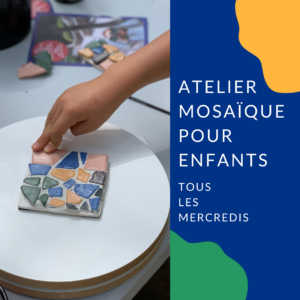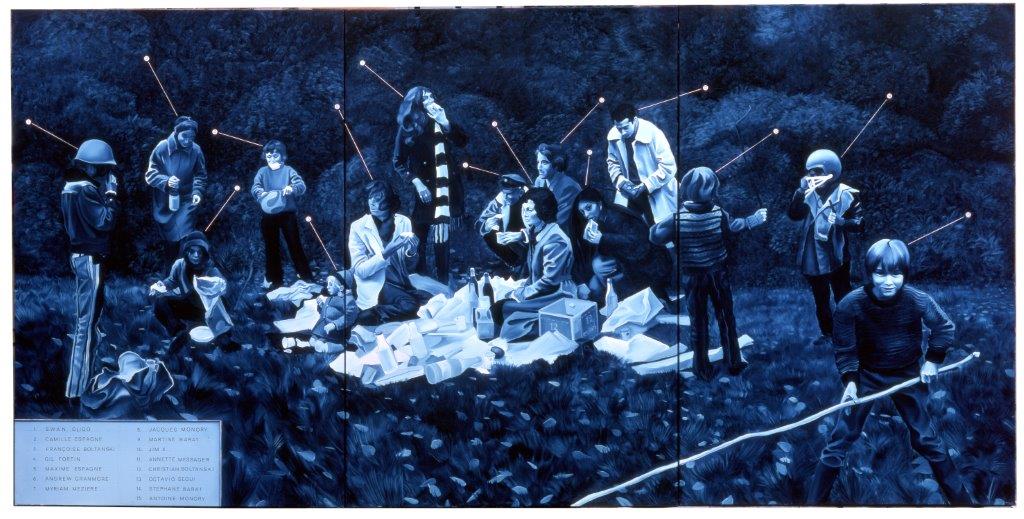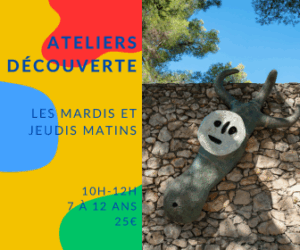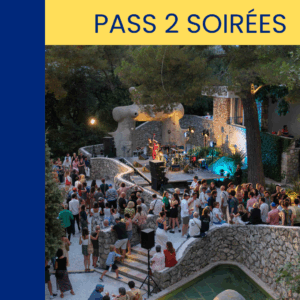
Pompéi
The formats of Jacques Monory’s paintings are often related to the “big screen” ambition of cinemascope, with a major appetite for panoramic shots which captivate the spectator with their dizziness. In the emblematic painting called Pompéi, the private memory takes on the dimensions of a painting of history. Jacques Monory is represented crouching in the grass with his friends, including the photographer Martine Barrat, the musician Andrew More, artists Annette Messager and Christian Boltanski, and his sister Françoise, surrounded by children, including Antoine, the painter’s son. Together, they are sharing lunch in Parc de Saint-Cloud on the edge of Paris. Monory assigns a number to each of the participants, which refers to their names listed at the bottom of the painting, like a cartel in a natural history museum.
Jacques Monory (1924-2018)
After training as a painter-decorator at the Paris School of the Arts, he worked for the art publisher Robert Delpire, where he discovered photography. In the 1960s, he became one of the pioneers of the narrative figuration movement, which was characterised by returning to figuration, as a reaction to abstract art, and far from American Pop Art. He was passionate about film, and also drew on the art of comic strips and photography to feed his painting.



